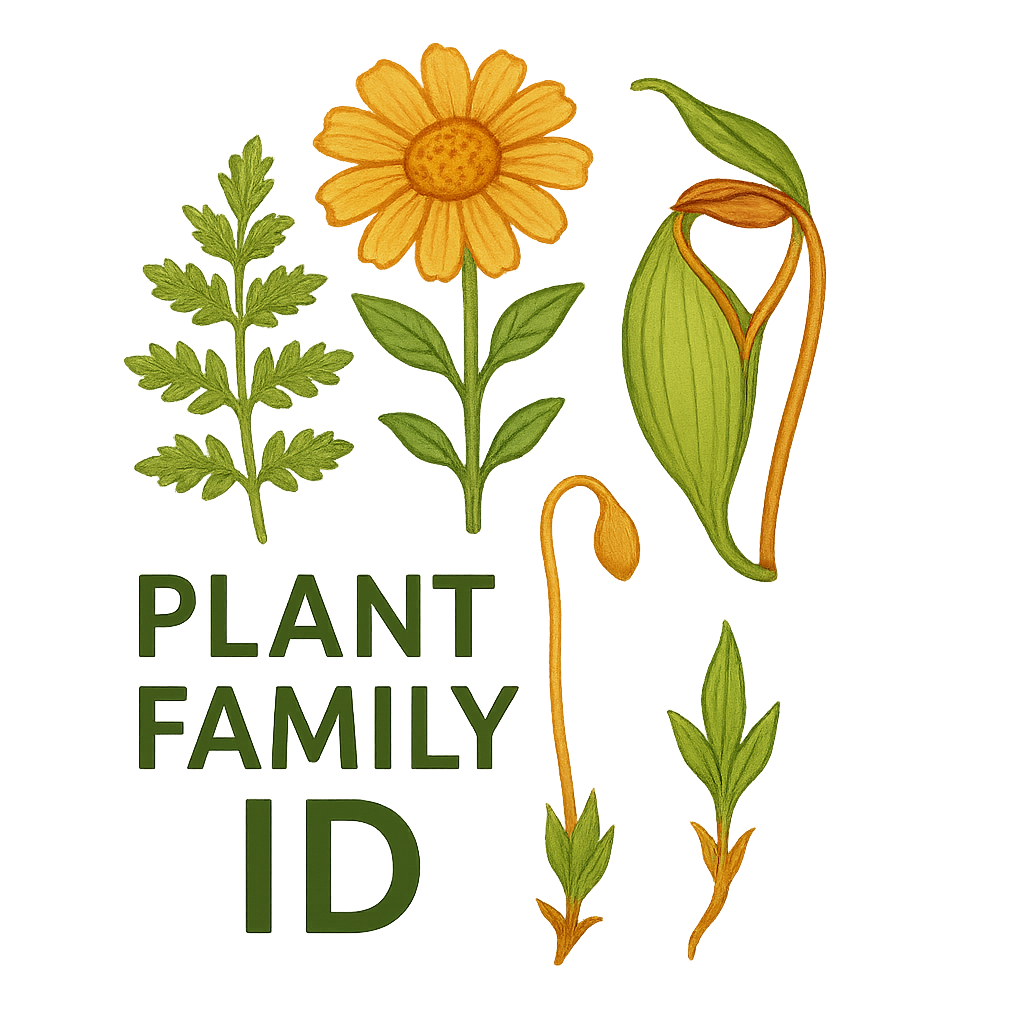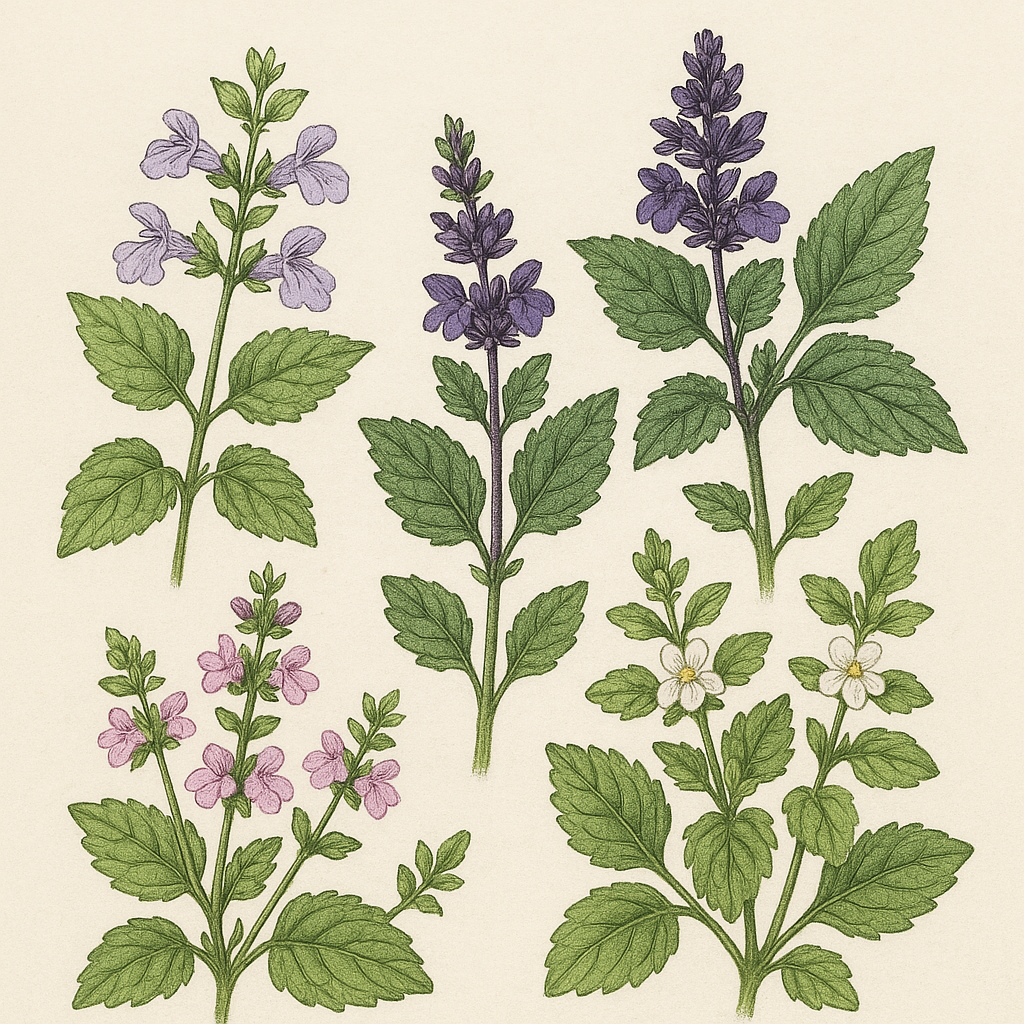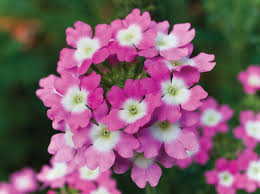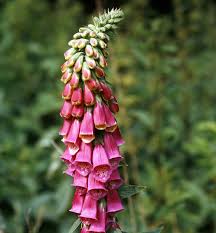Bignoniaceae
Trumpet Creeper Family / Catalpa Family
Bignoniaceae is a large and predominantly tropical family comprising trees, shrubs, and especially woody vines (lianas). They are widely recognized for their often large, showy, tubular or bell-shaped flowers (like trumpet creeper and catalpa) and distinctive fruits, which are typically elongated capsules containing numerous winged seeds. Key features include opposite, usually compound leaves (often with tendrils in vines) and zygomorphic flowers with usually 4 stamens plus a staminode. The family belongs to the order Lamiales.

Overview
The Bignoniaceae family, often called the Trumpet Creeper family, encompasses around 800-850 species primarily found in tropical regions worldwide, with the greatest diversity in the Neotropics (tropical Americas). Members are mostly woody plants, famously including spectacular flowering trees (Jacaranda, Tabebuia, Catalpa), shrubs (Tecoma), and a large number of highly successful woody vines or lianas (Campsis, Bignonia, Pyrostegia). These lianas often possess specialized climbing structures, such as tendrils modified from terminal leaflets.
The family is renowned for its large, often brightly colored, bilaterally symmetrical (zygomorphic) flowers, typically adapted for pollination by bees, moths, birds, or bats. The characteristic fruit is usually a long, pod-like or flattened capsule that splits open to release numerous flattened seeds equipped with membranous wings for wind dispersal. However, some genera exhibit unusual fleshy, indehiscent fruits, such as the Sausage Tree (Kigelia) and Calabash Tree (Crescentia).
Many species are valued horticulturally as ornamentals for their stunning floral displays or attractive form. Some provide timber, while others have traditional medicinal uses. Phylogenetically, Bignoniaceae is placed within the large order Lamiales, related to mints, verbenas, olives, and plantains.
Quick Facts
- Scientific Name: Bignoniaceae
- Common Name: Trumpet Creeper Family, Catalpa Family, Bignonia Family
- Number of Genera: Approximately 80-100
- Number of Species: Approximately 800-850
- Distribution: Primarily tropical worldwide (esp. Neotropics), with some temperate species.
- Evolutionary Group: Eudicots - Asterids - Lamiids - Lamiales
Key Characteristics
Growth Form and Habit
Predominantly woody plants, including trees, shrubs, and very commonly lianas (woody vines). A few members are herbaceous vines. Lianas frequently climb using specialized structures such as tendrils (often modified terminal leaflets), grappling hooks, or adventitious roots.
Leaves
Leaves are usually arranged oppositely on the stem, less commonly whorled or rarely alternate. They are typically compound, either pinnately or palmately, although some genera like Catalpa have simple leaves (considered derived from compound ancestors). In many climbing species, the terminal leaflet is modified into a simple or branched tendril. Leaflet margins are usually entire. Stipules are generally absent, though sometimes modified bud scales (pseudo-stipules) are present at the nodes.
Flowers
Flowers are generally large, showy, bisexual, and strongly zygomorphic (bilaterally symmetrical), although some approach radial symmetry. They are typically borne in terminal or axillary racemes, panicles, or cymes.
- Calyx: The sepals are fused (synsepalous) into a tube or bell shape, usually with 5 lobes or teeth, sometimes appearing truncate or splitting irregularly.
- Corolla: The petals are fused (sympetalous) into a tubular, funnel-shaped, or bell-shaped structure, typically ending in 5 lobes that are often arranged into two lips (bilabiate: 2 upper, 3 lower). Corolla color is diverse and often vibrant (yellow, orange, red, pink, purple, white).
- Stamens: Typically 4 fertile stamens, usually in two pairs of different lengths (didynamous), attached to the corolla tube (epipetalous). A fifth stamen is commonly present as a sterile rudiment (staminode), or occasionally absent. Anthers often positioned closely in pairs.
- Ovary: Superior, usually consisting of 2 fused carpels forming 2 locules (chambers). Placentation is typically axile, with numerous ovules per locule. A nectar disk is usually present at the ovary base. The style is single and typically ends in a 2-lobed stigma, the lobes of which are often sensitive and close upon being touched by a pollinator.
Fruits and Seeds
The most characteristic fruit is a dry, dehiscent capsule, which is often elongated and pod-like (linear) or flattened and oblong/oval. The capsule typically splits into two valves (loculicidal or septicidal dehiscence). Less common fruit types include fleshy, indehiscent berries or hard-shelled calabash-like fruits (Crescentia, Kigelia).
Seeds inside the capsules are typically numerous, flattened, and possess distinctive membranous wings that aid wind dispersal. Seeds in fleshy fruits are usually unwinged. Endosperm is absent.
Chemical Characteristics
Members often produce iridoid glycosides, a common feature in the Lamiales order. Quinones, such as lapachol found in Tabebuia (potentially toxic but also with medicinal interest), flavonoids, and tannins are also characteristic of the family. Some species yield dyes or have traditional medicinal applications.
Field Identification
Identifying Bignoniaceae often relies on the combination of woody habit, opposite compound leaves (often with tendrils), showy zygomorphic flowers, and distinctive capsule fruits with winged seeds:
Primary Identification Features
- Habit: Mostly woody plants (trees, shrubs, lianas).
- Leaves: Usually opposite and compound (pinnate or palmate). In vines, the terminal leaflet is frequently modified into a tendril.
- Flowers: Typically large, showy, zygomorphic (bilaterally symmetrical), tubular or bell-shaped, often two-lipped.
- Stamens: Usually 4 fertile stamens (often 2 long, 2 short) plus a fifth sterile staminode.
- Fruit: Most commonly an elongated or flattened, 2-valved capsule.
- Seeds: Typically numerous, flat, and distinctly winged (within capsules).
Secondary Identification Features
- Corolla: Fused petals (sympetalous), 5-lobed.
- Ovary: Superior, 2-loculed, with numerous ovules.
- Stigma: Often 2-lobed and sensitive to touch.
- Distribution: Predominantly tropical and subtropical.
Seasonal Identification Tips
- Year-round: Woody structure (tree, shrub, liana) is persistent. Opposite leaf arrangement is usually visible.
- Growing Season: Compound leaves (and tendrils on vines) are key vegetative features.
- Flowering Season: The large, showy flowers are often the most conspicuous feature when present.
- Fruiting Season: The characteristic capsules (often long and pod-like or flattened) can persist on the plant for extended periods, releasing winged seeds.
Common Confusion Points
- Other Opposite, Compound-leaved Woody Plants: Families like Oleaceae (ashes, Fraxinus) or Sapindaceae (maples, Acer) have opposite compound leaves but very different flower structures (often smaller, radially symmetric or nearly so) and fruit types (samaras, schizocarps).
- Other Zygomorphic Flowers: Families like Scrophulariaceae, Plantaginaceae, Lamiaceae (many are herbaceous) have zygomorphic flowers but differ in being mostly herbaceous, having simple leaves (usually), different fruit types (capsules often different shape, nuts, drupes), and often different stamen numbers/arrangements.
- Vines with Tendrils: Vitaceae (grapes) have tendrils opposite the leaves (not modified leaflets) and different flowers/fruits. Fabaceae (legumes) often have tendrils but possess papilionaceous flowers and legume fruits.
Field Guide Quick Reference
Look For:
- Woody tree, shrub, or liana
- Opposite, compound leaves
- Terminal leaflet often a tendril (in vines)
- Large, showy, zygomorphic flowers (trumpet/bell shape)
- Usually 4 stamens + 1 staminode
- Fruit typically a 2-valved capsule
- Seeds flat and winged (in capsules)
Key Variations:
- Habit (tree vs. shrub vs. liana)
- Leaf type (pinnate vs. palmate vs. simple)
- Flower color and precise shape
- Fruit type (capsule vs. fleshy fruit)
- Climbing mechanism (tendrils, roots, none)
Notable Examples
Bignoniaceae includes many well-known ornamental trees and vines, as well as ecologically significant tropical species.

Campsis radicans
Trumpet Creeper, Trumpet Vine
A vigorous deciduous woody vine native to the southeastern United States, known for its large, orange to red, trumpet-shaped flowers pollinated by hummingbirds. Climbs using aerial rootlets. Leaves are opposite and pinnately compound. Produces long, pod-like capsules with winged seeds.

Catalpa speciosa
Northern Catalpa
A medium to large deciduous tree native to the Midwestern United States. Characterized by large, simple, heart-shaped leaves (appearing opposite or whorled), showy panicles of white, trumpet-shaped flowers with purple and yellow spotting, and very long, persistent, bean-like capsules ("cigar tree").

Jacaranda mimosifolia
Jacaranda, Blue Jacaranda
A popular subtropical tree native to South America, widely planted for its stunning display of lavender-blue, trumpet-shaped flowers borne in large panicles. Leaves are large and finely divided (bipinnately compound), resembling those of mimosa. Fruit is a flattened, woody, disc-shaped capsule.

Kigelia africana
Sausage Tree
A tree native to tropical Africa, famous for its large, grey, sausage-shaped fruits that hang down on long, rope-like stalks. The large, dark red, bell-shaped flowers open at night and are pollinated by bats and moths. Leaves are pinnately compound.
Phylogeny and Classification
Bignoniaceae is a well-established family within the large order Lamiales, which belongs to the Lamiid clade of Asterid eudicots. Molecular phylogenetics places Bignoniaceae within the core group of Lamiales, closely related to other major families such as Verbenaceae, Lamiaceae (mints), Acanthaceae, Plantaginaceae, Scrophulariaceae, Oleaceae (olives), and Gesneriaceae.
The family itself is often divided into several tribes based on morphology and molecular data (e.g., Bignonieae - mostly lianas with compound tendrils, Tecomeae - often trees/shrubs, Catalpeae, Oroxyleae, Jacarandeae, Crescentieae - fleshy fruits). The evolution of the liana habit, diverse pollination syndromes (ranging from bees and hummingbirds to moths and bats), and dispersal mechanisms (wind via winged seeds vs. animal dispersal of fleshy fruits) are key aspects of the family's diversification, particularly in the Neotropics.
Position in Plant Phylogeny
- Kingdom: Plantae
- Clade: Angiosperms (Flowering plants)
- Clade: Eudicots
- Clade: Asterids
- Clade: Lamiids
- Order: Lamiales
- Family: Bignoniaceae
Evolutionary Significance
Bignoniaceae is significant for studying:
- Evolution of the Liana Habit: Represents a major radiation of woody vines, especially in the Neotropics, showcasing diverse adaptations for climbing (e.g., leaflet tendrils).
- Pollination Biology: Exhibits a wide array of pollination syndromes adapted to different pollinators (bees, hummingbirds, moths, bats), reflected in flower shape, color, nectar production, and timing of opening.
- Dispersal Syndromes: Primarily adapted for wind dispersal via winged seeds (anemochory), but notable shifts to animal dispersal (zoochory) with fleshy fruits in genera like Kigelia and Crescentia.
- Tropical Diversity: Contributes significantly to the structural complexity and biodiversity of tropical forests worldwide.
- Phylogenetic Relationships within Lamiales: Helps understand the evolutionary connections among the many families in this large and important order.



